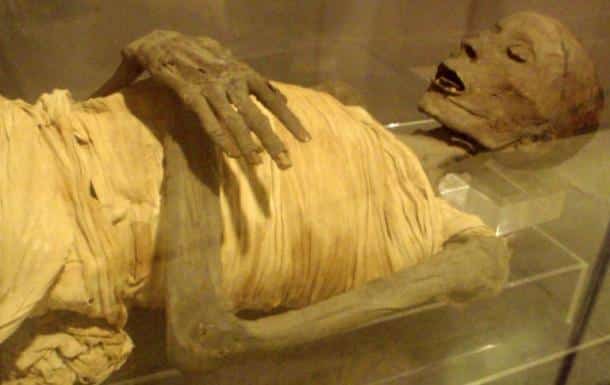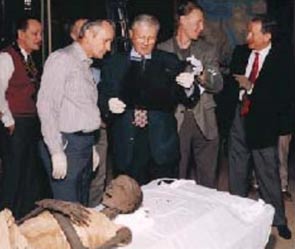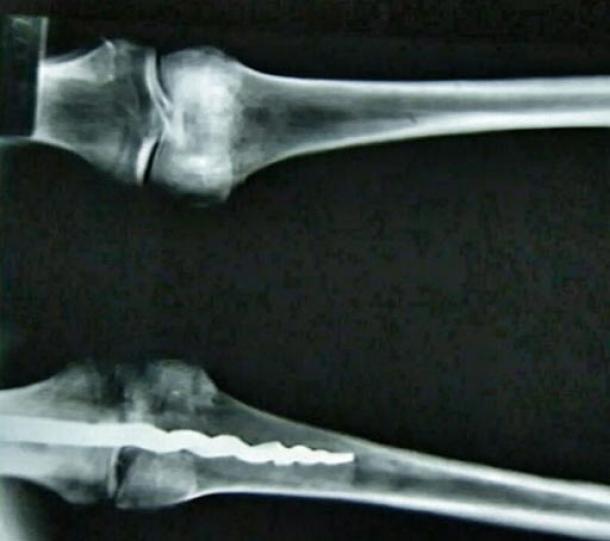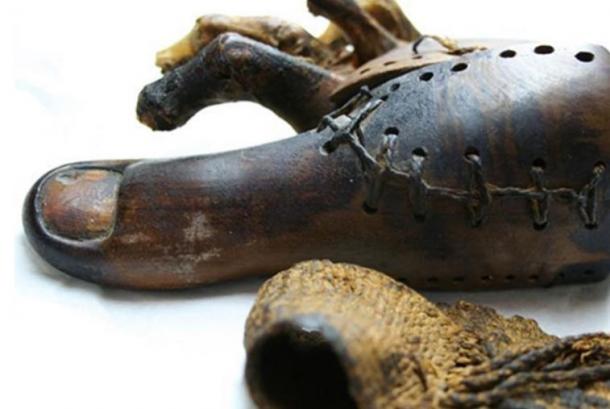In 1971, the Rosicrucian Museum in California received a sealed ancient Egyptian sarcophagus, which contained a very well-preserved mummy from ancient Egypt.
Two decades later, a team of scientists discovered the shocking truth – the mummy contained evidence of an advanced surgery performed nearly 2,600 years ago. Inside the mummy’s left knee is a 23cm long orthopedic metal screw, inserted using extremely advanced biomechanical procedures that are not inferior to today’s modern techniques.
Usermontu – mummy of unknown origin
When the Rosicrucian Museum received the ancient sealed coffin in the 1970s, they had no idea that there was still a mummy inside. And yet, investigations discovered that this mummy was not the first owner of the sarcophagus – it belonged to a priest named Usermontu (‘the power of Montu’) – and for a long time After death, this mummy was placed in Usermontu’s coffin. However, this mummy from nowhere is still named after the first owner of the coffin.
Analysis of mummification techniques shows that ‘Usermontu’ was a figure of the Egyptian aristocracy who lived during the New Kingdom (circa mid-16th century – 11th century BC). His mummy was 1.5 meters tall and had red hair.
 Usermontu mummy (photo: Wiki)
Usermontu mummy (photo: Wiki)
Shocking discovery
In August 1995, Professor C. Wilfred Griggs of Brigham Young University, Utah, USA and a group of other experts, conducted X-rays of 6 mummies stored at the Rosicrucian Museum, of which There is Usermontu’s mummy, before he held lectures here. They were shocked when footage showed a 23cm long metal screw lodged in a mummy’s left knee.
Ancient or modern?
A report from Brigham Young University (BYU) said that from these X-ray results alone, it is impossible to conclude that metal implant technology has appeared since ancient times. Professor Griggs believes the screw was used to attach the leg to the rest of the body in more modern times.
“ I assume that the screw is a modern-day item. I think we can determine how the screw was inserted into the leg, and perhaps even guess when it was inserted into the bone,” Griggs said in a report released by BYU . onion. “ I just thought it would be interesting if we captioned it, ‘Someone took an ancient mummy and put a modern screw in to connect the leg and the mummy together. ”
 A group of experts came to examine the mummy (photo: Rosicrucian Egyptian Museum)
A group of experts came to examine the mummy (photo: Rosicrucian Egyptian Museum)
Decode the mystery
Determined to find the truth, Griggs, Dr. Richard T. Jackson, an orthopedic surgeon from Provo, and Dr. E. Bruce Mcliff, chief of radiology at Utah Valley Medical Center, carefully The kidney drills into the bone to insert a tiny camera and examine the screw, while also helping to take samples of the bone and metal.
A team of scientists discovered traces of ancient organic resins, similar to bio-cement materials used in shaping today, in addition to the appearance of ancient fats and textile fibers. Dai still sticks firmly in its original position. Further analysis shows that this highly technical procedure was performed in ancient times, about 2,600 years ago.
 The screw is 23 cm long (photo: Brigham Young University)
The screw is 23 cm long (photo: Brigham Young University)
High-level orthopedic surgery
The team was astonished to discover that the screw was similar in design to those used today in bone stabilization procedures.
“ We were amazed at our ability to create a screw with biomechanical principles that we still apply today – for example, the principle of hard bone fixation,” said Dr. Richard Jackson said. “ It’s beyond anything we usually imagine about this era .”
According to the BYU report, the screw “ penetrated the femur in a spiral structure, similar to the biomechanical method used today. The other end of the screw is located in the tibia, with three ridges extending from the body of the screw to prevent the screw from rotating within the bone .
Before or after death?
After this incredible discovery, the question on everyone’s mind was – was the surgery performed while Usermontu was alive, or dead?
A comprehensive study of the joint showed that the nail was implanted after Usermontu’s death but before his embalming ceremony. The ancient Egyptians believed in resurrection after death, in which the body was a vehicle for the soul to reside in life after death. Therefore, ensuring the integrity of the body is extremely important. Griggs added that keeping the body in good condition was believed by the Egyptians to be essential for the soul and body to reunite.
Although this is the first case of metal orthopedic implants to appear in public, other examples of pre-embalming body care include treating wounds, making teeth, and fitting prosthetics. has been discovered many times before.
 A 3,000-year-old prosthetic toe was attached to a mummy after death, on display at the Egyptian Museum in Cairo (photo: University of Manchester)
A 3,000-year-old prosthetic toe was attached to a mummy after death, on display at the Egyptian Museum in Cairo (photo: University of Manchester)
“ The interesting thing is that the craftsman took a lot of effort to make the screw ,” Griggs said. “ He could have just tied the leg with a string and believed that regeneration would put the parts back together .”
“ This story shows us how sophisticated ancient people really were ,” Griggs said. “ Sometimes our arrogance is surprised by the way people of different cultures and periods can think and act .”





